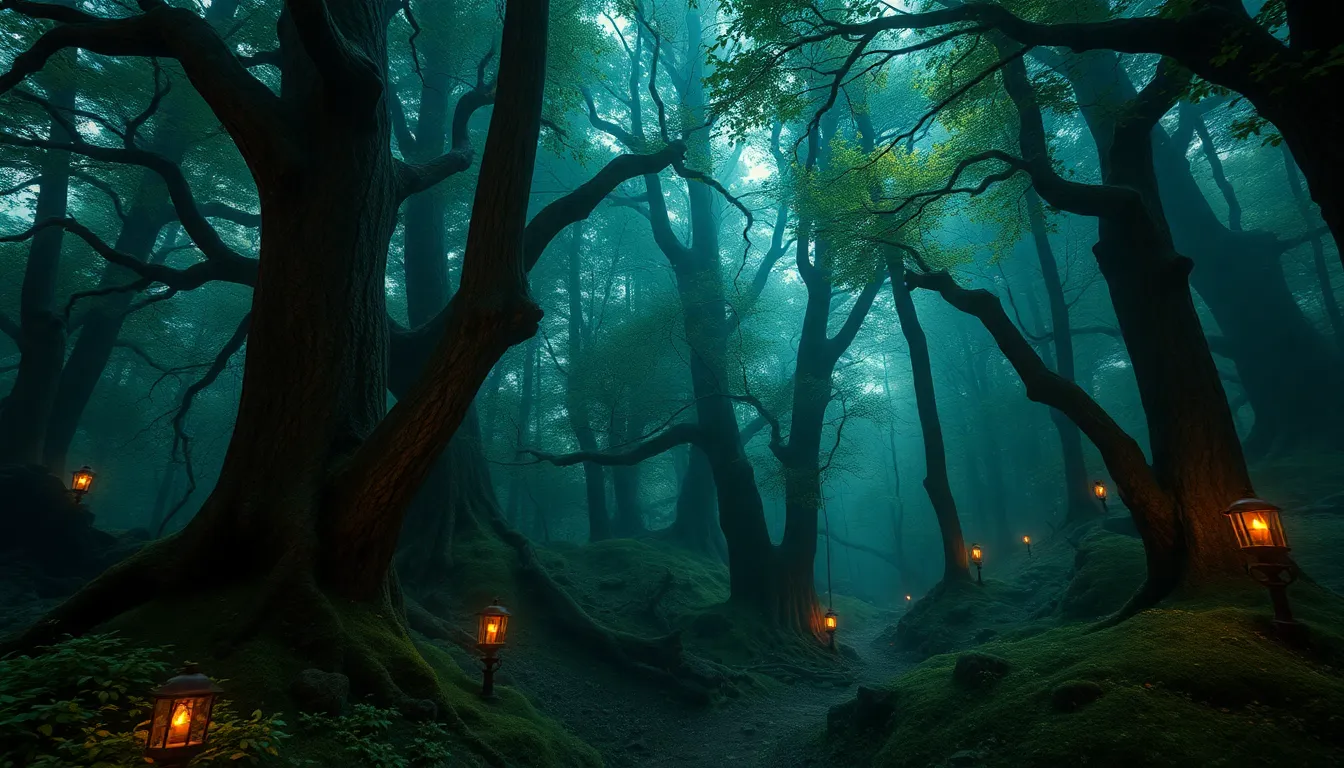Enchanted Forests: Nature’s Most Enigmatic Landscapes
Introduction to Enchanted Forests
Enchanted forests are often depicted as magical places, filled with wonder and mystery. These forests are characterized by their dense foliage, towering trees, and a sense of tranquility that envelops visitors. The allure of enchanted forests lies in their ability to inspire awe and evoke a sense of adventure, often serving as backdrops for fairy tales and folklore.
The enchantment of these landscapes can be attributed to their biodiversity, unique ecosystems, and the mystical atmosphere created by dappled sunlight filtering through thick canopies. They are spaces where nature intertwines with imagination, leading to a rich tapestry of cultural significance and ecological importance.
Cultural Significance of Enchanted Forests
Throughout history, enchanted forests have been woven into the fabric of folklore and mythology. Many cultures have revered these mystical woods, often portraying them as realms inhabited by spirits, fairies, and mythical creatures. For instance:
- European Folklore: Many tales from European folklore feature enchanted forests as settings for adventures involving knights, witches, and magical beings.
- Native American Legends: Various tribes tell stories of sacred forests, where animals speak and the spirits of ancestors reside.
In literature and art, enchanted forests have served as powerful symbols. They often represent the unknown, a journey of self-discovery, or a passage into another realm. Renowned works such as “A Midsummer Night’s Dream” by Shakespeare and the illustrations of Arthur Rackham capture the essence of these mystical landscapes, inviting audiences to explore their depths.
Biodiversity Within Enchanted Forests
Enchanted forests are home to a rich array of flora and fauna, many of which are unique to these ecosystems. The dense vegetation provides habitat and food for a variety of species, fostering an intricate web of life. Key aspects of biodiversity in enchanted forests include:
- Flora: Many enchanted forests boast ancient trees, vibrant wildflowers, and rare plants that thrive in their specific conditions.
- Fauna: These ecosystems often support a diverse range of wildlife, including birds, mammals, insects, and amphibians, some of which are endemic to the region.
Biodiversity is crucial for ecological balance, providing resilience against diseases and climate changes. Healthy ecosystems also contribute to the sustainability of local communities and economies.
Geographical Distribution of Enchanted Forests
Enchanted forests can be found across the globe, each with its unique characteristics shaped by climate and geography. Notable examples include:
- The Black Forest, Germany: Known for its dense coniferous trees and fairy-tale charm.
- The Amazon Rainforest, South America: A vast, biodiverse landscape filled with undiscovered species and ancient trees.
- The Redwood National and State Parks, USA: Home to some of the tallest trees on Earth, creating a mystical atmosphere.
These forests thrive in specific climatic conditions, such as temperate or tropical climates, which support their diverse ecosystems and enchanting beauty.
The Role of Enchanted Forests in Ecosystem Services
Enchanted forests play a vital role in providing essential ecosystem services that benefit both the environment and humanity. Key services include:
- Carbon Sequestration: Forests absorb carbon dioxide, helping to mitigate climate change.
- Water Purification: Forests filter water, maintaining clean water supplies for ecosystems and human use.
- Soil Conservation: Tree roots stabilize soil, preventing erosion and promoting nutrient cycling.
These services highlight the importance of preserving enchanted forests, as they not only support biodiversity but also contribute to global ecological health.
Environmental Threats Facing Enchanted Forests
Despite their beauty and importance, enchanted forests face numerous environmental threats. The most pressing issues include:
- Deforestation: Logging and land conversion for agriculture lead to habitat loss and fragmentation.
- Climate Change: Changes in temperature and precipitation patterns threaten the delicate balance of these ecosystems.
These threats can result in the loss of biodiversity, disruption of ecosystem services, and diminished cultural significance.
Conservation Efforts and Sustainable Practices
To combat the threats facing enchanted forests, various organizations and initiatives are dedicated to their protection. Efforts include:
- Protected Areas: Establishing national parks and reserves to safeguard critical habitats.
- Reforestation Projects: Planting trees to restore degraded forest areas.
- Community Engagement: Involving local communities in conservation efforts to promote sustainable practices.
Raising awareness about the importance of enchanted forests is crucial for fostering a culture of conservation and stewardship.
Exploring Enchanted Forests: Ecotourism and Adventure
Enchanted forests attract visitors seeking adventure and connection with nature. Popular activities include:
- Hiking: Exploring trails that wind through lush scenery.
- Photography: Capturing the beauty of unique landscapes and wildlife.
- Wildlife Watching: Observing native species in their natural habitats.
Responsible tourism practices are essential to minimize environmental impact, such as:
- Staying on designated trails to prevent habitat damage.
- Practicing Leave No Trace principles to preserve the natural environment.
The Psychological and Spiritual Benefits of Enchanted Forests
Spending time in enchanted forests offers numerous psychological and spiritual benefits. Nature has a therapeutic effect on mental health, promoting relaxation and reducing stress. The practice of forest bathing, or “Shinrin-yoku,” encourages individuals to immerse themselves in the forest atmosphere, leading to:
- Improved mood and emotional well-being.
- Enhanced focus and creativity.
- Strengthened connections to nature and oneself.
These benefits highlight the importance of preserving enchanted forests not only for ecological reasons but also for the well-being of individuals and communities.
Conclusion: The Future of Enchanted Forests
Enchanted forests are not only enchanting landscapes but also vital ecosystems that require our protection. As we face increasing environmental challenges, the importance of preserving these mystical places for future generations cannot be overstated. By engaging with and protecting enchanted forests, we contribute to the conservation of biodiversity, the sustainability of our planet, and the enrichment of human experience.
Let us all take action—whether through supporting conservation efforts, practicing responsible tourism, or simply spending time in nature—to ensure that enchanted forests continue to inspire awe and wonder for years to come.



